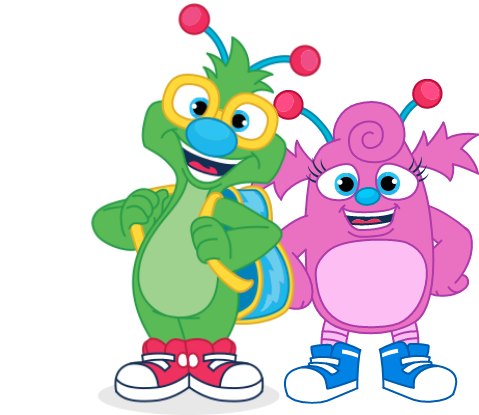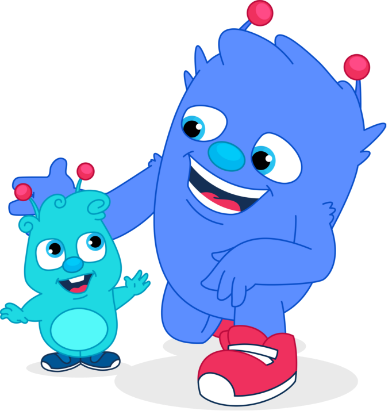May 21, 2015
The mess… is where the magic happens.
The mess…is where the magic happens.
We’ve all been there – your gloriously clean and organized classroom slowly but surely starts to lose its glimmer. Each easel paint drip, sensory bin splatter, rice table spill, and toy bin tumble brings on a growing sense of anxiousness and you start envisioning a check list of all the things that need attention to return your classroom back to its “clean” state. You’re not alone.
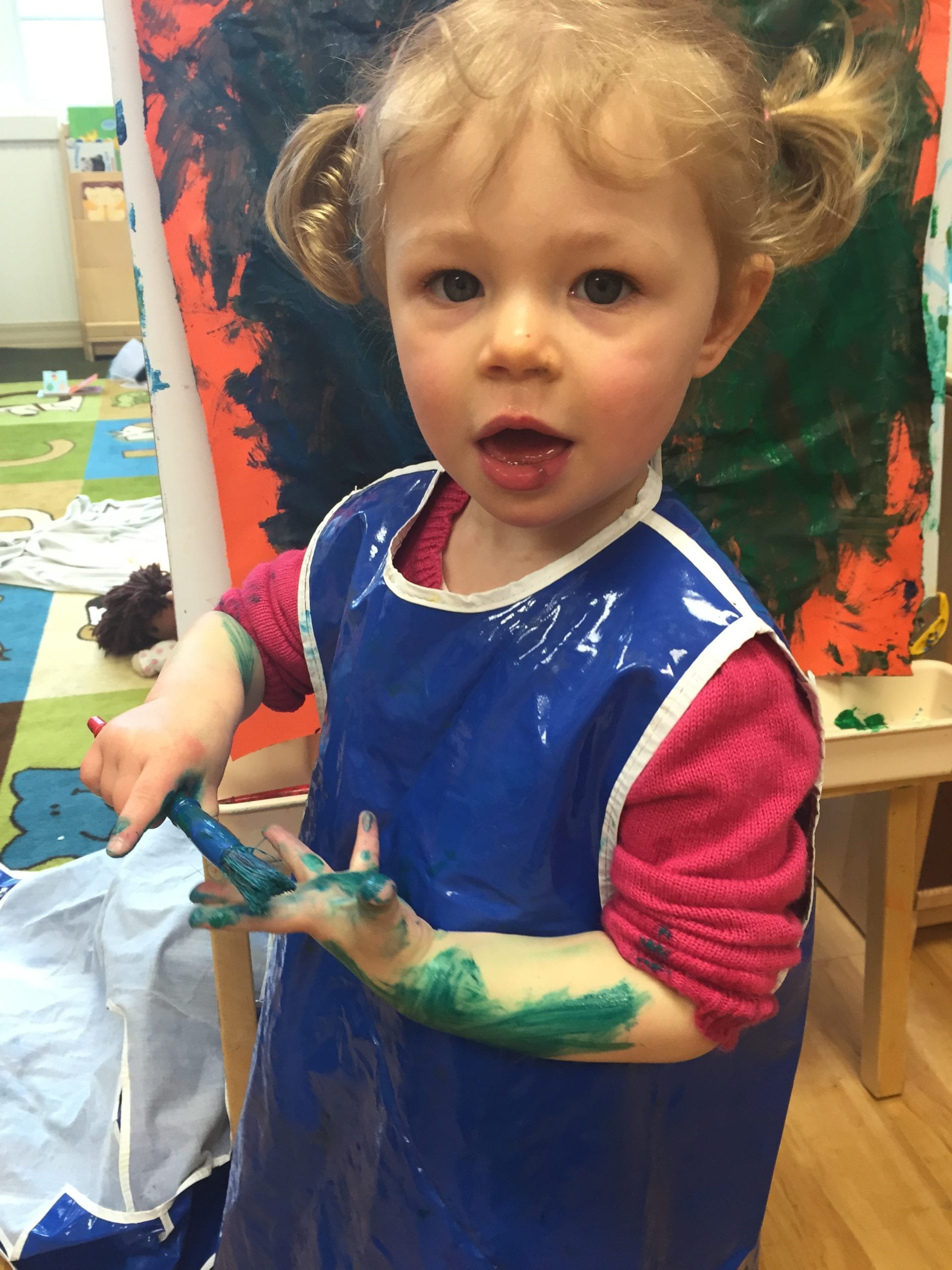
As adults, we can’t help but fixate on the mess. Our brains are wired to clean up, fix, and put out fires. This is amplified as teachers; given the fact that our responsibility is to maintain a Safe, Clean, Organized, Professional, and Educational environment. I challenge you to think of S.C.O.P.E. in a bit of different light – let me paint you a picture.
A classroom upholding S.C.O.P.E. can also be a classroom that is buzzing with hands-on exploration, questioning, meaningful conversations with small groups and individual children about their discoveries, and yes… messes. Good, wholesome, paint splattering, oobleck dripping, dirt digging mess. Yes, hands are often covered in goop and wiped on faces, clothes and furniture. Precious outfits sometimes go home with some evidence of a fun sensory experience or easel project, and tiny sneakers go home with play dough filled tread on occasion. Although messy, these children are going home with more neural connections in their brain than they did when they arrived.
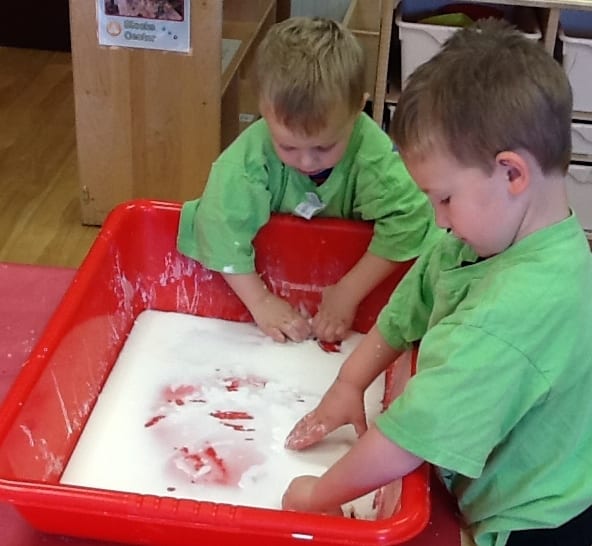
It’s important to note – clean and messy are not mutually exclusive — the opposite of clean is not messy, it’s dirty. Your classroom can be both clean and messy, it just can’t be dirty. All of the messy fun described above is, of course, expected to be cleaned up when the experience is over (with age-appropriate assistance from children). “Dirty” is a mess left unattended after the experience is over.
Equally important is being prepared for these experiences. Think ahead an cover tables in newspaper if necessary for easy clean up, consider moving extra messy fun out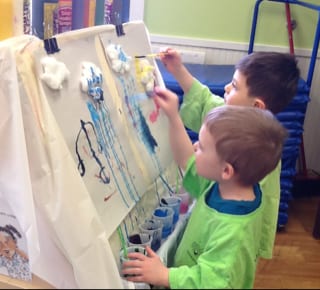 doors, and make sure you’ve established a solid routine so that children know and/or are willing to wear a smock for messy play.
doors, and make sure you’ve established a solid routine so that children know and/or are willing to wear a smock for messy play.
Society as a whole attaches a negative stigma to “mess,” as though it is an unfortunate thing that needs to be immediately resolved. I’m telling you, in early childhood and beyond, the mess is where the magic happens.
Place yourself in the shoes of a toddler, for example. Children are simply discovering their world the only way they know how – by chasing their curiosity. In doing so they can’t help but need to feel the Jell-O squish through their fingers, and find out what happens when they fling their plate on the floor. They have to know what happens when the bin of toys turns upside down and what happens when they smack the pile of water on the table. This is the most natural, genuine, and developmentally appropriate way to be a young child.
Share the m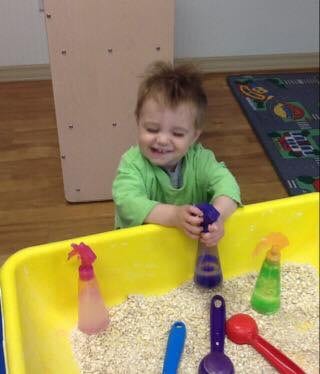 ess by establishing your classroom community as one who loves to furiously explore for healthy stretches of time, but also knows how to pitch in and clean up. Give children a clear signal, letting them know it’s almost time to help clean up and get ready for ____. Then, sing a song or play a tune, dance, and clean! If you make it fun, they will pitch in. Remember: there’s no magic wand to make this happen instantly – this takes time and consistency to develop, but it is definitely possible!
ess by establishing your classroom community as one who loves to furiously explore for healthy stretches of time, but also knows how to pitch in and clean up. Give children a clear signal, letting them know it’s almost time to help clean up and get ready for ____. Then, sing a song or play a tune, dance, and clean! If you make it fun, they will pitch in. Remember: there’s no magic wand to make this happen instantly – this takes time and consistency to develop, but it is definitely possible!
As caretakers, we have a responsibility to accept where they are as learners and support them in their development. This means giving them lots of opportunities to explore in untidy ways, embrace those messy moments when a discovery is made (and not be too quick to clean it up), and retrain our minds to embrace the chaos of a buzzing room full of learning and not fixate on every little splatter.
Please take a closer look at the links below to learn more! As always, your questions and feedback are always welcome. Jennifer.Horner@doodlebugs.com
Contributed by Jennifer Horner, Education Specialist
Embrace the Mess: 5 Skills Developed Through Art Exploration
Through the eyes of a child: two to three-year-old (video)
http://www.babycentre.co.uk/v25006313/through-the-eyes-of-a-child-two-to-three-year-old-video
Kids Remind Us Why All People Should Be Viewed Through the Eyes of the Child (video)
http://www.huffingtonpost.com/2015/01/14/the-eyes-of-a-child-psa_n_6473082.html

 1.866.668.5111
1.866.668.5111  6:30 am - 6:00 pm
6:30 am - 6:00 pm 
 Give a Happy High Five!
Give a Happy High Five!

